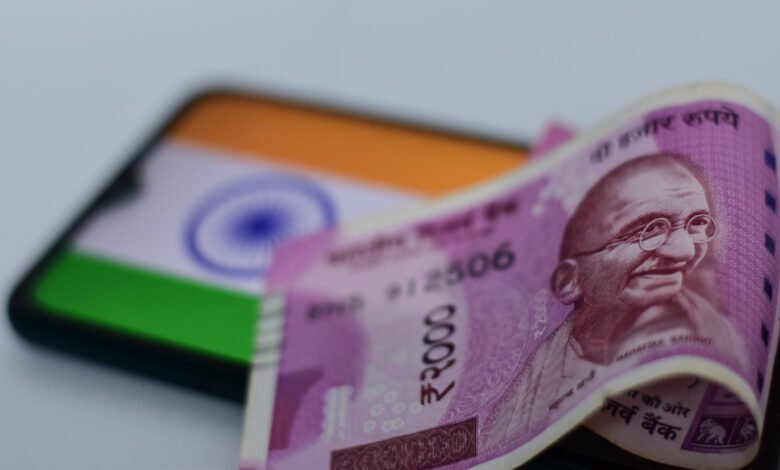Digital Payments Take Over As Currency Notes Circulation Dips In Diwali Week For The First Time in Twenty Years; Here’s Looking At the Digital Revolution.

“For the first time in 20 years, currency in circulation declined during the Diwali week. The innovations in technology have changed the Indian payment system,” stated the SBI Ecowrap.
Digital transactions may have overtaken the use of currency notes, as per the latest report by the State Bank Of India (SBI).
Ecowrap, in its report, stated that for the month of Diwali this year, the currency notes in circulation declined for the first time in 20 years.
The trend is a benchmark for the fact that digital transactions have become the norm, and the Indian economy may also be undergoing a structural transformation.
Digital transactions can be defined as automated or online transactions that take place without the use of paper.
Diwali Week and Currency Notes
As per the State Bank of India’s report, the currency in circulation during the Diwali week saw a drop by Rs. 7600 crores; this by no means is a small figure and is a first in 20 years.
Payment systems like UPI, Wallets, & PPIs have today made it possible to transfer money digitally, employing simpler and cheaper means.
The report has credited the rise and success in digital payments to the efforts taken by the government to formalize as well as digitalize the economy.
According to the SBI report, currency in circulation lowered by Rs 7,600 crore in the Diwali week compared to an increase of Rs 44,000 crore in 2021 and Rs 43,800 crore in 2020. The lowest growth was in 2019 when it rose by Rs 580 crore.

The Rise and Rise of Digital Payments in India
The latest retail digital transaction data points to transactions done through UPI, IMPS & e-wallet alone, having a share of roughly 16%, 12%, and 1%, respectively. Therefore the small retail payments done through UPI/e-wallet holds approximately 11 – 12% share in the payment industry.
Whereas NEFT holds a share of 55% in terms of value, most of the transactions done in this category are either through internet banking or at the branch.
The report has classified digital transactions as transactions done either via IMPS, UPI, and PPI and cash transactions as CIC.
The CIC trend shows it has been on a decline from 2016 at 88% to 2022 at 20%, and as per estimates, it will go lower to 11.15% by 2017.
The above data shows that digital payments are set out to be the most favoured mode of transactions in the coming years as the digital transactions share is continuously and steadily rising from 11.26% in 2016 to 80.4% in 2022 and is expected to touch 88% by 2017.
Meanwhile, The share of credit & debit cards in transaction value has remained flat.

How are Digital Payments beneficial to the Banking System, the Government and the Indian Economy?
The rise in digital transactions is beneficial to all – the banking system, the government, and the Indian Economy – as it helps to modulate seignorage costs and promotes a cashless economy.
This will also mean all the analyses of currency leak-age that impact bank deposits; liquidity estimation now could see a fundamental reorientation in the future.
A reduction in CIC benefits banks and the economy as it increases bank deposits, which can be lent. “A lower currency in circulation also is akin to a cash reserve ratio, CCR cut for the banking system, as it results in less leakage of deposits and it will impact monetary transmission positively,” according to the report.
According to a report, in India, 66.6 billion transactions worth $270.7 billion are anticipated to shift from cash to card and digital payments by 2023.
Why have Digital Payments become so successful?
Handling currency notes, especially in large amounts, can be tiresome; cash and cheques also add to factors like risk, steps, and physical presence. Hence one of the most important benefits of digital payments is the convenience it offers, and it reduces the dependency on cash, has fast transfer speed, and can be done from any part of the world with just a click of a button.
As more customers transact online because of the ease, security and convenience, it makes people feel comfortable buying online, investing digitally and transferring funds through electronic means.
The increase in money/funds movements and conducting business online contributes to the progress of the economy as it results in new online ventures being launched in the market and making profits via digital payments.

Go Digital. Get Discounts
During demonetization, the government came up with various strategies to make digital payments get more traction. Hence, going digital benefited the users as there were a number of discounts provided to the users for multiple occasions as well as purchases.
For example, to encourage people to move to the digital mode of making transactions, the government had announced a waiver of service tax on both debit and credit card transactions up to Rs 2,000.
Such incentives and measures by the government helped people become more digital-friendly, and thus, it, in turn, helped the government to keep tabs on tax evasion.
Moreover, the customer could avail of the benefits of discounts online every so often and get a fair price for the product and service needed.
Future of Digital Payments
Think how far we have evolved – from the barter system to cash, then to card payments and now to digital payments; it is a long way indeed.
According to Statista, the total value of transactions of digital payments in 2019 in India amounted to US$64,787 million, and this is only set to increase by leaps and bounds.
Many companies are developing applications and methods to become more seamless for customers and merchants.
Now, customers don’t need to give their card information for digital payment through the epos link; merchants can accept bulk payments and split payments with just a click.
Many Payment services providers and financial institutions today are opting for secure ways to make online payments that are secure for both merchants and customers.

Conclusion: The government’s push from cash driven to a cashless economy, especially after the demonetization, was met with certain apprehension from The general public.
There were questions as to whether the online transactions will serve as more convenient or will it amount to stress and additional charges.
However, we have come a long way from those concerns, and today online digital transactions have become a popular mode of transacting.
The ease and convenience have made it a better alternative to cash and other forms of traditional channels.
It has not only saved the government hundreds in spending to print traditional money but also helped the banking system, the economy, consumers/customers, and merchants.
Therefore, it does not come as a surprise that according to the State Bank Of India’s report, currency transactions declined for the first time during the Diwali week, for people have moved on to using digital payments and have left the cash behind.
When it comes to the digital revolution, the government has been successful in initiating the same and that too within a short duration of time and has changed the course of how the nation did its financial transactions.
The digital revolution has become a success, and it has taken many generations to a new form of financial transactions available just at a click of a button.




